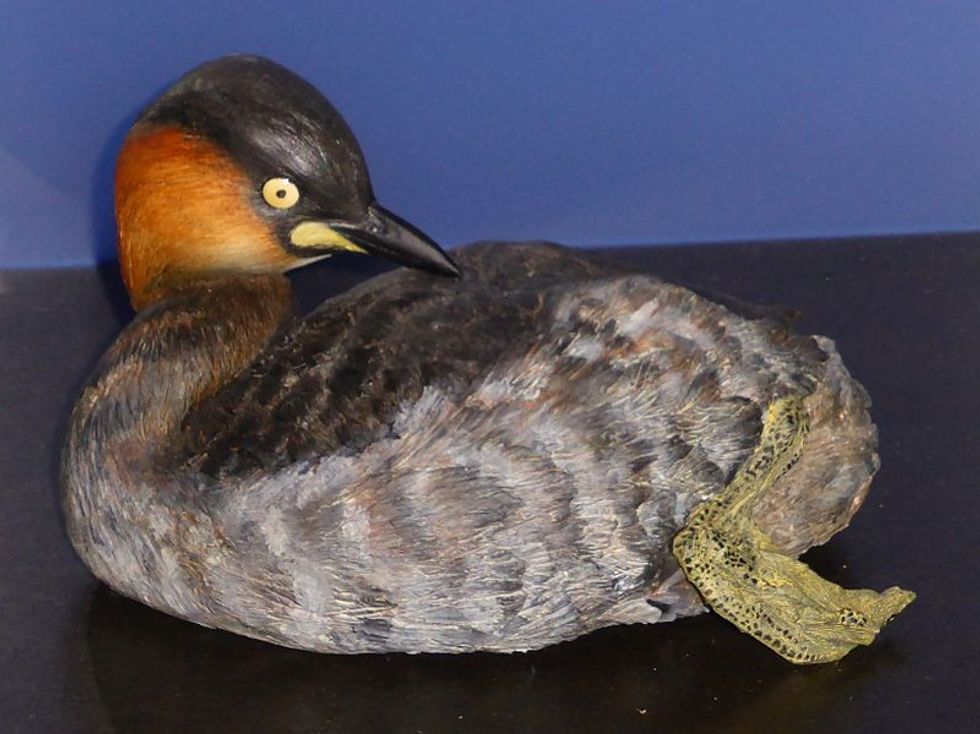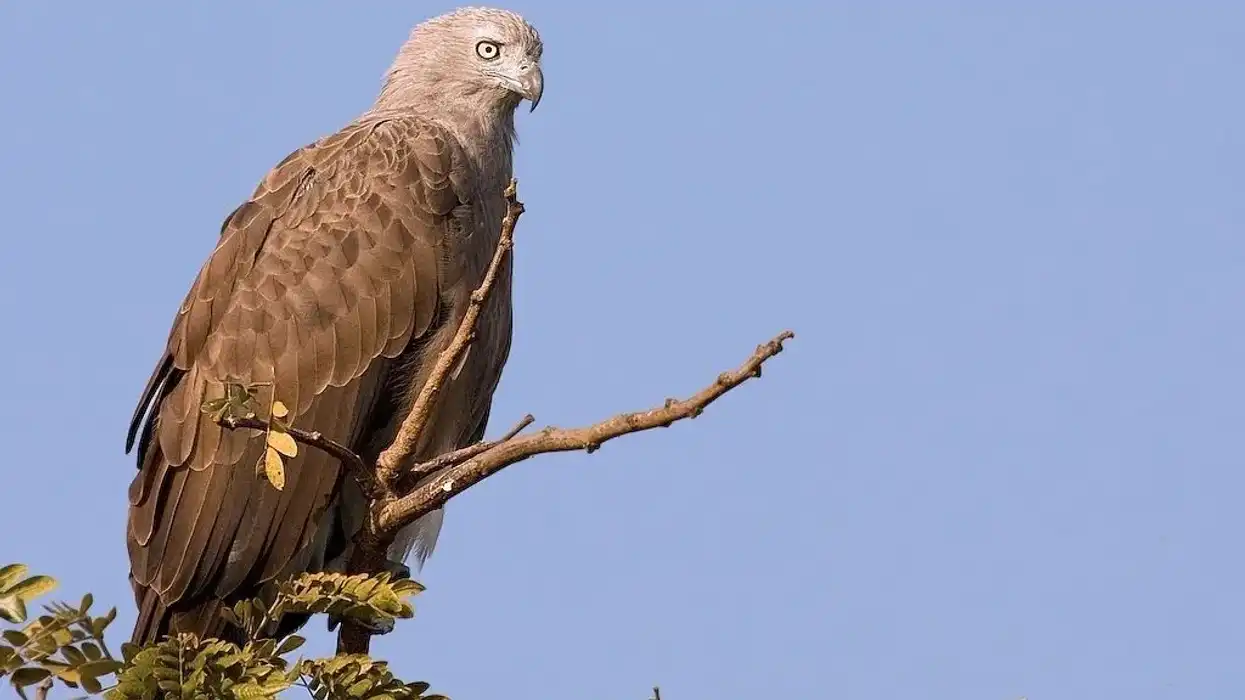The Alaotra Grebe (Tachybaptus rufolavatus) is an extinct diving bird species from around the globe that was endemic to Lake Alaotra and the surrounding lakes in Madagascar. This species was spotted in permanent freshwater lakes, marshes, and pools. These species were also known as Madagascar Red-necked Grebe, Rusty Grebe, Aloatra Dabchick, and Delacour's Grebe.
These birds had black-gray feathers with a rusty-chestnut shade on their cheeks and the side of their necks. These birds also had small wings, ivory shade eyes, and spotted feet with large claws.
Like most grebes, these were known to breed between April to June with a clutch size of two to five bluish eggs, and both the parents were responsible for incubation. They usually ate small fish or decaying marine organisms.
Since the last sighting was confirmed in 1989, surveys were conducted in 2004 as well as 2009. Due to the failure in finding this species, they were declared extinct among the world's bird species by the IUCN conservation status.
The main reasons behind their extinction were caused by human actions through leftover nylon gill nets and two newly introduced carnivorous fish species.
If you want to know interesting facts about waterbirds, check out the Coot and the Cinnamon Teal.
Alaotra Grebe Interesting Facts
What type of animal is an Alaotra Grebe?
Madagascar red-necked Grebes was a diving bird species, confirmed by surveys and declared extinct according to the IUCN conservation status.
What class of animal does Alaotra Grebe belong to?
Along with other grebes, this bird species belonged to the class of Aves under the family Podicipedidae and genus Tachybaptus.
How many Alaotra Grebes are there in the world?
Since their last sighting in 1989, the world's population of this species is considered extinct.
Where does Alaotra Grebe live?
The Madagascar red-necked Grebe species was found in the Alaotra Lake in Madagascar as well as a few surrounding lakes.
What is an Alaotra Grebe habitat?
The habitat of this species includes inland freshwater lakes, marshes, and pools.
Who does Alaotra Grebe live with?
The exact living pattern of this species is not recorded. However, these birds were seen in pairs during the breeding season.
How long does Alaotra Grebe live?
The exact lifespan of these birds from Lake Alaotra has not been recorded, but most species are known to live up to 15 years.
How do they reproduce?
The reproduction patterns of this bird could not be evaluated accurately due to the unforeseen consequences of its extinction. However, it was noted that this bird began breeding between April to June and January to March.
In addition, this bird was seen breeding with the Little Grebe species at the beginning of the 21st century. However, since both these species are biologically quite different, their hybrids were weak and could have killed the gene pool entirely.
What is their conservation status?
Dr. Leon Bennun from BirdLife International confirmed that this bird species of the world was Extinct due to human actions and intrusive species. They were declared Endangered, before several surveys and IUCN red list confirmed and declared their conservation status had reached Extinction.
Alaotra Grebe Fun Facts
What does the Alaotra Grebe look like?
This extinct species of grebes from Lake Alaotra were rather small birds with a long, chisel-shaped black beak, similar to that of Red-Necked Grebe. They had short wings, black spots on their feet, and ivory shade eyes with a white line that extended from the beak to below the eyes.
During the breeding season, this species had an oily sheen in their plumage with a dark blackish cape across the crown and down the nape.
This species showed signs of molting with dusky-rufous underparts, pale reddish-brown ear-coverts and throat, and dark brown-black back.
In the non-breeding plumage, the underparts and sides are grayish with dark, faded stripes. The cheeks and neck get a rich chestnut shade while the back and crown turn black.
 *We've been unable to source an image of the Alaotra Grebe and have used an image of the Little Grebe instead. If you are able to provide us with a royalty-free image of Alaotra Grebe, we would be happy to credit you. Please contact us at hello@kidadl.com
*We've been unable to source an image of the Alaotra Grebe and have used an image of the Little Grebe instead. If you are able to provide us with a royalty-free image of Alaotra Grebe, we would be happy to credit you. Please contact us at hello@kidadl.com
How cute are they?
Like most grebes around the globe, this duck-like species looked cute. However, their eyes do seem a little scary because of their white shade and dot-like pupil.
How do they communicate?
None of the sources, including the IUCN, has recorded anything about the communication among these birds.
How big is Alaotra Grebe?
The Alaotra Grebe (Tachybaptus rufolavatus) species was around 9.8 in (25 cm) which is about half the size of the Ivory-Billed Woodpecker and the North Island Brown Kiwi.
How fast can an Alaotra Grebe fly?
The flight speed of this extinct species from Lake Alaotra is unknown. However, these birds have small wings and could only fly short distances.
How much does an Alaotra Grebe weigh?
The weight of this extinct species was never recorded due to the unforeseen consequences of its extinction.
What are the male and female names of the species?
The male and females of this extinct species of Lake Alaotra Grebe do not have separate names. However, they do have several interchangeable names such as Aloatra Dabchick, Delacour's Grebes, Madagascar Red-necked Grebes.
What would you call a baby Alaotra Grebe?
The babies of this species were known as chicks and juveniles like other birds.
What do they eat?
The diet of these birds of Lake Alaotra Grebe mostly consisted of small fish.
Are they dangerous?
No, this species of Lake Alaotra Grebe were like normal grebes and were not a danger to animals or humans.
Would they make a good pet?
No, considering this species of Lake Alaotra was endangered and then reached its extinction, it would not make a good pet in captivity.
Did you know...
Due to their small wing size, these birds were non-migratory.
Why did the Alaotra Grebe go extinct?
This bird was confirmed as extinct by Leon Bennun from BirdLife International. This species of Lake Alaotra grebe entered the list of the world's extinct birds due to several reasons.
One of the main reasons for its extinction was because humans introduced carnivorous fish such as the Snakehead Murrel and the Largemouth Bass.
Another contributing factor to its extinction was the usage of monofilament nylon gill nets in Lake Alaotra. These nets infiltrated the natural habitat of these birds causing several diving birds to get caught in them and die.
It is also spectated that a minor reason behind their extinction could be eroded soil from agriculture, deforested hills, and sedimentation.
This decreased the water quality of the lakes and as a result, damaging or driving away from the birds. In addition, newly introduced species like exotic plants, fish, and mammals, especially Tilapia, resulted in less food for these birds.
Types of Grebes?
There are different types of living as well as extinct grebes under the genera of Miobaptus, Thiornis, Miodytes, Pliolymbus, Aechmophorus, Podilymbus, Tachybaptus, Podiceps, Rollandia, and Poliocephalus. Some of these existing species include Australian Grebe, Tricolored Grebe, Western Grebe, Clark's Grebe, Great Grebe, White-tufted Grebe, Titicaca Grebe, and Hooded Grebe.
Some of the extinct species include the Colombian Grebe and the Atitlán Grebe.
Here at Kidadl, we have carefully created lots of interesting family-friendly animal facts for everyone to discover! For more relatable content, check out these Eared Grebe facts and Horned Grebe facts pages.
You can even occupy yourself at home by coloring in one of our free printable exotic bird coloring pages.




 *We've been unable to source an image of the Alaotra Grebe and have used an image of the Little Grebe instead. If you are able to provide us with a royalty-free image of Alaotra Grebe, we would be happy to credit you. Please contact us at hello@kidadl.com
*We've been unable to source an image of the Alaotra Grebe and have used an image of the Little Grebe instead. If you are able to provide us with a royalty-free image of Alaotra Grebe, we would be happy to credit you. Please contact us at hello@kidadl.com



